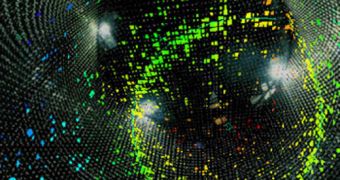Even if the Large Hadron Collider (LHC) has barely began functioning properly for a couple of years, particle physicists are already thinking about the next generation of elementary particle splitters, and one particular concept appears to have captured their imagination – muon colliders.
A muon is an elementary particle classified as a lepton – in the same group of particles as electrons, taus and three types of neutrinos. It has a negative electric charge, similar to the electron, and a spin of ½, physicists say.
Even though they were originally called mu mesons, and classified as a special class of mesons, modern particle physicists have renounced the habit. The muon has an antimatter particle of opposite charge, called the positive muon, or antimuon.
The particle in itself is rather unstable, and has a mass 200 times heavier than that of an electron. Generally, physicists regard these elementary particles as heavier cousins to electrons, Daily Galaxy reports.
As far as the limitations of the LHC go, they are really fairly straightforward. While it can reach unprecedented energy levels in its opposite beams, it cannot cover the whole high-energy particle spectrum, Daily Galaxy reports.
One of the intrinsic advantages that muons have over protons is that tend to lose their energy very slowly. As such, they can be made to spin inside circular particle accelerators at vast energy levels.
If electrons were to be used in this context, they would have to be placed inside very long, linear accelerators, which is unfeasible. Additionally, less equipment is needed to accelerate muon.
But muons only last 2.2 microseconds before becoming unstable and disappearing, which is a challenge for using them to conduct particle physics. One possible solution is inspired by Albert Einstein.
Muon collider designers say that they could just accelerate the elementary particles to the speed of light, which would enable them to last for longer from our point of temporal reference, due to the relativistic time dilation effect.
It remains to be seen whether the challenges associated with constructing a muon accelerator will be resolved within the next few years.
However, it could be said that the next generation of colliders will rely on elementary, unstable particles to conduct advanced research, experts conclude.

 14 DAY TRIAL //
14 DAY TRIAL //